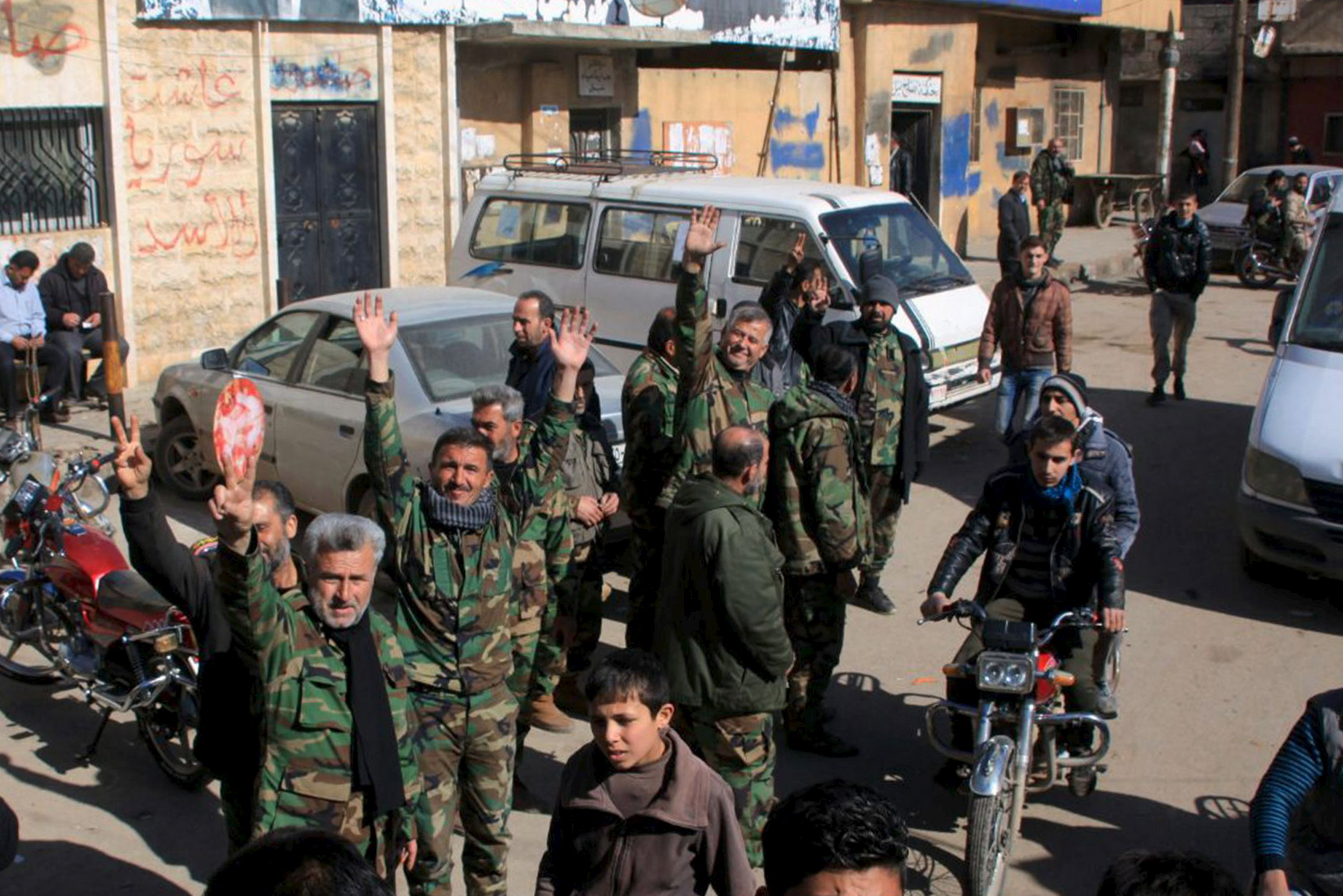
The Syrian Civil War is reaching a turning point. Over the past two weeks, the regime of Syrian President Bashar al-Assad seized several villages north of Aleppo, the country’s largest city and one of the last remaining strongholds of Syria’s non-jihadist rebels.
The advance cut off Aleppo’s anti-regime groups from their last remaining supply lines into Turkey, and put Assad in a position to retake a fiercely contested city that had a pre-war population of over 2 million.
Assad’s gains have come on the backs of foreign militaries that are themselves showing signs of strain. Iran has been forced to send Afghan refugees to fight in Syria while Hezbollah, Iran’s Lebanese proxy, has seen as much as one-third of its fighters killed or injured in the country’s war. And the Aleppo offensive would have stalled without Russian air support — Damascus failed to retake substantial territory when it first launched its Aleppo offensive six months ago.
A map from Fabrice Balanche, a visiting fellow at the Washington Institute of Near East Peace gives an idea of what’s probably coming next within Syria. With Assad’s army on the march, the regime, and Kurdish militias who are not necessarily opposed to the regime, are now in a position to retake the entirety of the Turkish-Syrian border.
At the same time, the rebel defeat in Aleppo — one of the non-jihadist rebel movement’s last remaining strongholds — means Assad may now have the opportunity to angrily ISIS’s Raqqa enclave by sweeping across eastern Syria:
 The Washington Institute for Near East Policy
The Washington Institute for Near East Policy
The near-term looks promising for the regime. As the map shows, it has options now that the Assad and his partners have broken the Aleppo stalemate.
That still doesn’t mean Assad’s won.
Assad’s gains have revealed his dependence on Iranian and Russian support. And as Balanche writes, the regime’s gains may trigger an alarming shift in strategy among anti-Assad regional powers like Turkey and Saudi Arabia. Assad’s opponents could try to open up new battle lines that would threaten the regime’s survival in a best-case scenario — while endangering Lebanon’s stability and expanding the regional character of the war.
Balanche writes that Syria and Saudi Arabia could "open a new front in northern Lebanon, where local Salafist groups and thousands of desperate Syrian refugees could be engaged in the fight." It’s a high-risk, high-reward strategy: "Such a move would directly threaten Assad’s Alawite heartland in Tartus and Homs, as well as the main road to Damascus. Regime forces would be outflanked, and Hezbollah’s lines of communication, reinforcement, and supply between Lebanon and Syria could be cut off."
At the same time, it would expand the scope of the conflict into an already unstable neighboring country, deepen the involvement of outside powers, and trigger even more Russia and Iranian investment in sustaining Assad.
 Thomson ReutersA man rides a motorcycle past damaged buildings in al-Myassar neighborhood of Aleppo, Syria
Thomson ReutersA man rides a motorcycle past damaged buildings in al-Myassar neighborhood of Aleppo, Syria
The Syrian Civil War could intensify even with Assad "winning," and even without the opening of an additional front. It will take months, or perhaps even years of intense combat for Assad to consolidate the gains depicted in Balanche’s map — Aron Lund, editor of the Carnegie Endowment for International Peace’s Syria in Crisis website, told Business Insider by email last week it’s conceivable it could take the regime "many years" just to fully retake Aleppo.
Assad’s existing gains have also come at a enormous human cost. Tens of thousands of people have already fled Aleppo, creating a wave of refugees that neighboring states are already struggling to address — and that could complicate Europe’s struggles to integrate the continent’s existing refugees from the conflict. As French ambassador Gerard Arau tweeted on February 5th in connection to the impending siege of Aleppo, "The Syrian Civil War is now an existential threat to the EU."
As the past four years in Syria demonstrate, turns in battlefield momentum can say surprisingly little about where the conflict is actually going.



